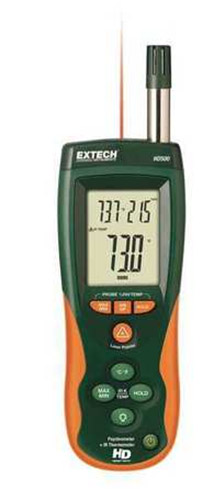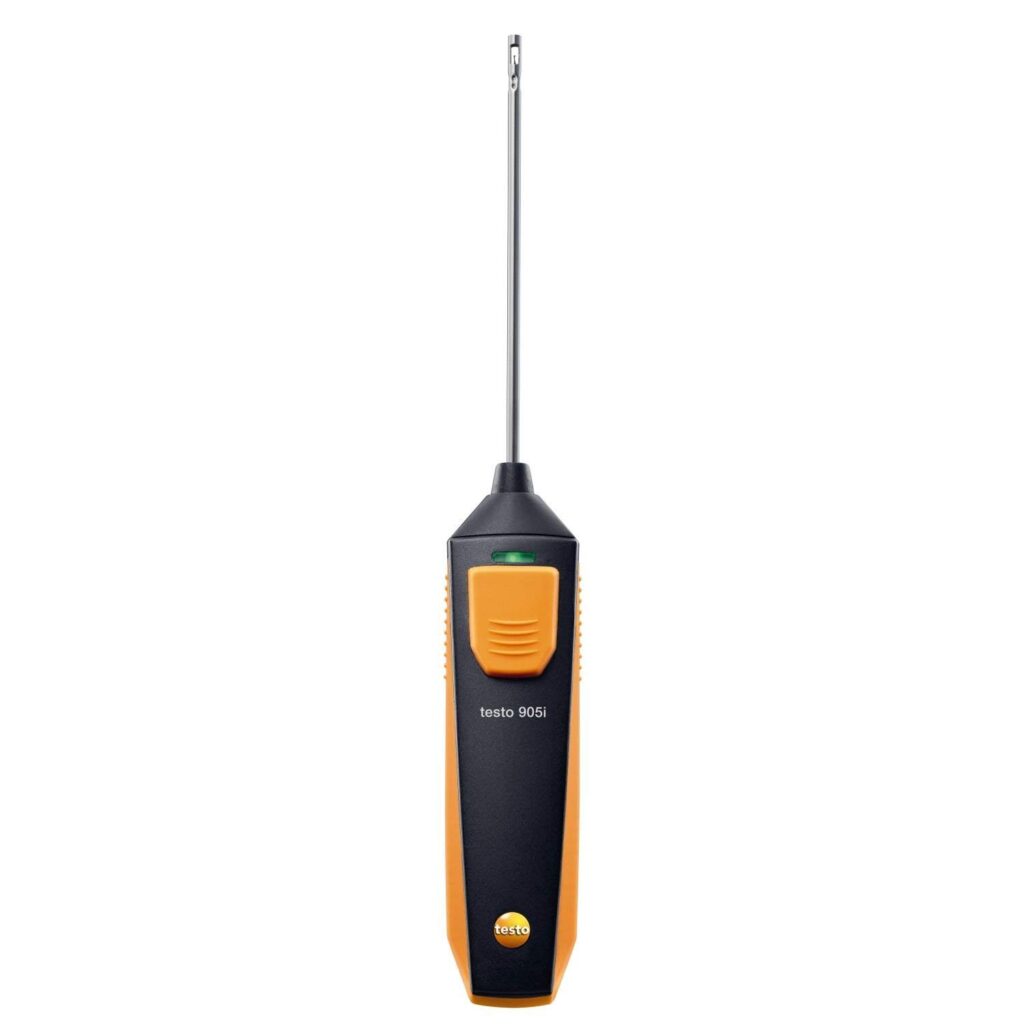Measure Ventilation Airflow to Find Your New Solution
For over sixty years Moffitt has been designing ventilation solutions to help buildings feel cooler and more comfortable. By just looking at a building, we can suggest a handful of steps you can take to improve ventilation. However, finding the best possible solution requires the best possible information. A number of tools can be used to measure ventilation airflow in your building. This includes thermometers, psychrometers, and anemometers. Read on to learn how we use these tools to help create a better environment in your plant.
Infrared Thermometer
The first tool that a ventilation engineer uses might be the most obvious. Our team uses thermometers to take temperature measurements throughout the plant. For every project we take readings at different locations in the building to assemble a cohesive picture of the overall temperature conditions. Our team primarily focuses on where employees are experiencing problems, but we take readings throughout the plant as well.
To properly get temperatures throughout the building, we generally use devices with infrared and laser features. This allows us to record temperature readings safely and easily at different elevations. This eliminates the risks involved with climbing to different heights and levels in the building. Getting readings at different elevations allows us to calculate a building’s temperature rise and determine the buildings heat load. This is all crucial to providing the best custom design for the customer.
Measure Ventilation Airflow Temperature

The next tool the Moffitt team uses is the psychrometer. A psychrometer provides the us with the relative humidity data at different locations in the building. It is used to determine atmospheric humidity and relative humidity. In plants with high levels of moisture, relative humidity can have a huge impact on how the temperature feels. Of course, there are other factors which can also affect how the employees actually feel.
It takes about 60 seconds for the psychrometer to get an accurate reading so it may take some time for our team members to get all the readings they need.
Measure Ventilation Air Velocity

Measuring the temperature of the air is only half of the equation. The second half is measuring how fast the air is moving. Moffitt uses anemometers get air velocity readings. These readings help us design a balanced system, where the air is correctly moving in the building. It will show where the hot air “builds up” and where the cool air “gets stuck”. Overall, this tool gives us insight into what is really going on with the building’s ventilation.
The anemometer gets a reading much more quickly than the psychrometer. It takes only about 5 seconds to get an accurate reading of the airflow velocity at any given spot.
Getting the Complete Picture
All these tools are essential to providing a custom solution that works and gives us the ability to quantify the results of our system.
Our team makes site visits to take these readings. Everyone is trained on them. More accurate designs, very accurate CFD models.
